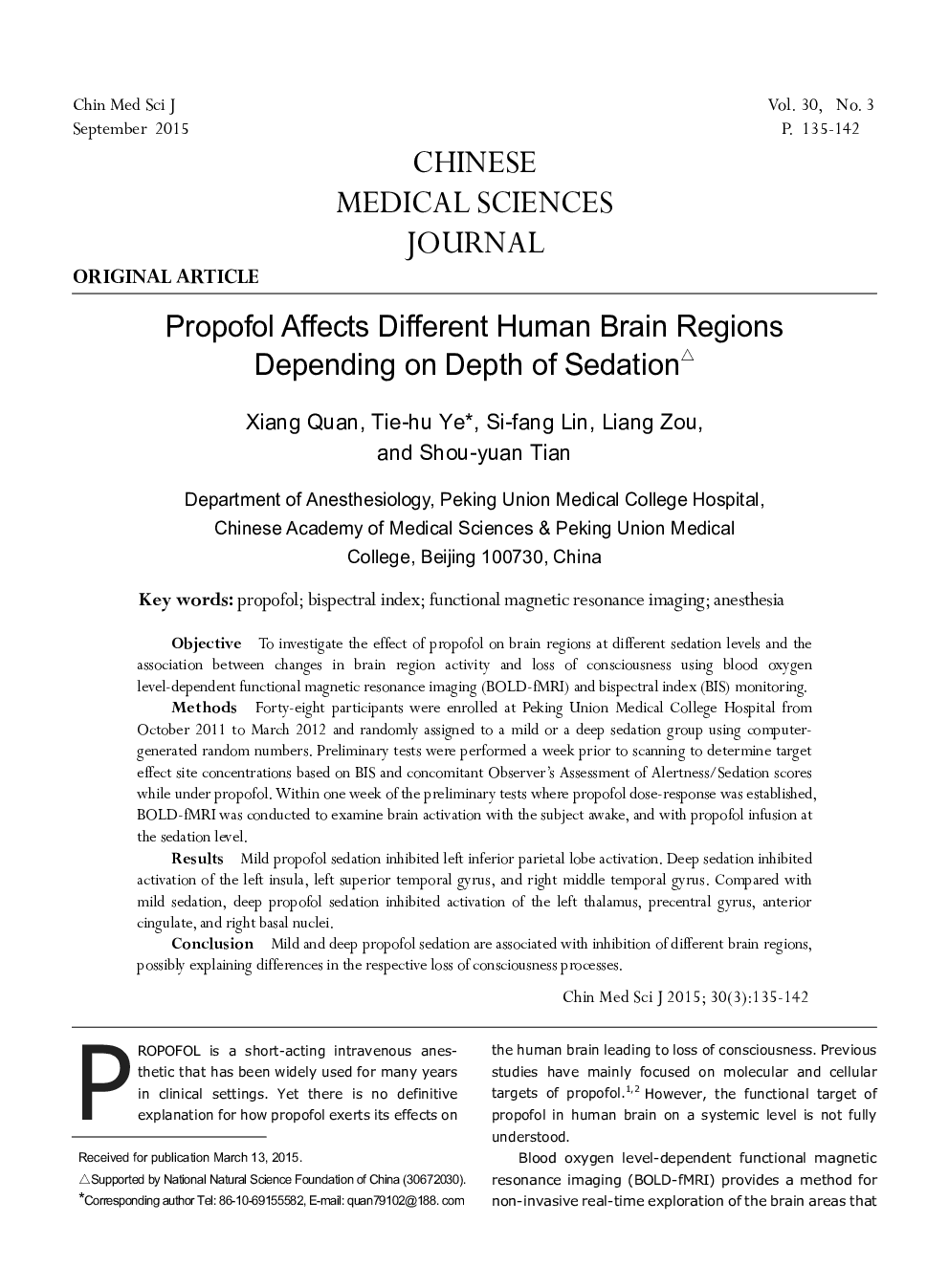| Article ID | Journal | Published Year | Pages | File Type |
|---|---|---|---|---|
| 3459466 | Chinese Medical Sciences Journal | 2015 | 8 Pages |
ObjectiveTo investigate the effect of propofol on brain regions at different sedation levels and the association between changes in brain region activity and loss of consciousness using blood oxygen level-dependent functional magnetic resonance imaging (BOLD-fMRI) and bispectral index (BIS) monitoring.MethodsForty-eight participants were enrolled at Peking Union Medical College Hospital from October 2011 to March 2012 and randomly assigned to a mild or a deep sedation group using computer-generated random numbers. Preliminary tests were performed a week prior to scanning to determine target effect site concentrations based on BIS and concomitant Observer's Assessment of Alertness/Sedation scores while under propofol. Within one week of the preliminary tests where propofol dose-response was established, BOLD-fMRI was conducted to examine brain activation with the subject awake, and with propofol infusion at the sedation level.ResultsMild propofol sedation inhibited left inferior parietal lobe activation. Deep sedation inhibited activation of the left insula, left superior temporal gyrus, and right middle temporal gyrus. Compared with mild sedation, deep propofol sedation inhibited activation of the left thalamus, precentral gyrus, anterior cingulate, and right basal nuclei.ConclusionMild and deep propofol sedation are associated with inhibition of different brain regions, possibly explaining differences in the respective loss of consciousness processes.
